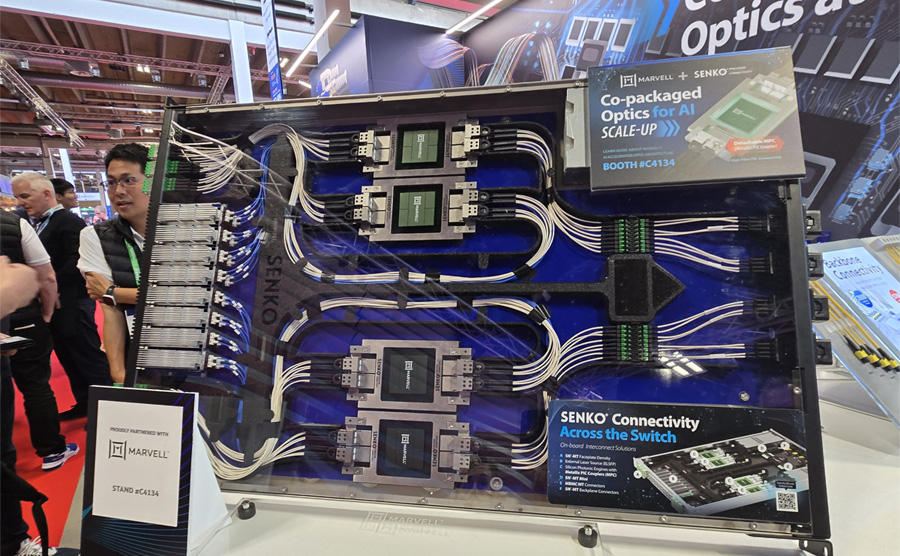

By Vienna Alexander, Marketing Content Professional, Marvell

Marvell was announced as the top Connectivity winner in the 2025 LEAP Awards for its 1.6 Tbps LPO Optical Chipset. The judges' remarks noted that “the value case writes itself—less power, reduced complexity but substantial bandwidth increase.” Marvell earned the gold spot, reaffirming the industry-leading connectivity portfolio it is continually building.
The LEAP (Leadership in Engineering Achievement Program) Awards recognize best-in-class product and component designs across 11 categories with the feedback of an independent judging panel of experts. These awards are published by Design World, the trade magazine that covers design engineering topics in detail.
This chipset, combining a 200G/lane TIA (transimpedance amplifier) and laser drivers, enables 800G and 1.6T linear-drive pluggable optics (LPO) modules. LPO modules offer longer reach than passive copper, at low power and low latency, and are designed for scale-up compute-fabric applications.
By Chris McCormick, Product Management Director, Cloud Platform Group, Marvell
Co-packaged optics (CPO) will play a fundamental role in improving the performance, efficiency, and capabilities of networks, especially the scale-up fabrics for AI systems.
Realizing these benefits will also require a fundamental transformation in the way computing and switching assets are designed and deployed in data centers. Marvell is partnering with equipment manufacturers, cable specialists, interconnect companies and others to ensure the infrastructure for delivering CPO will be ready when customers are ready to adopt it.
The Trends Driving CPO
AI’s insatiable appetite for bandwidth and the physical limitations of copper are driving demand for CPO. Network bandwidth doubles every two to three years, and the reach of copper reduces meaningfully as bandwidth increases. Meanwhile, data center operators are clamoring for better performance per watt and rack.
CPO ameliorates the problem by moving the conversion of electrical to optical from an external slot on the faceplate to a position as close to the ASIC as possible. This shortens the copper trace, which may improve the link budget enough to remove digital signal processor (DSP) or retimer functionality, thereby reducing the overall power per bit, a key metric in AI datacenter management. Achieving commercial viability and scalability, however, has taken years of R&D across the ecosystem, and the benefits will likely depend on the use cases and applications where CPO is deployed.
While analyst firms such as LightCounting predict that optical modules will continue to constitute the majority of optical links inside data centers through the decade,1 CPO will likely become a meaningful segment.
The CPO Server Tray
The image below shows a conceptualized AI compute tray with CPO developed with products from SENKO Advanced Components and Marvell. The design contains room for four XPUs and up to 102.4 Tbps of bandwidth delivered through 1024 optical fibers, all in a 1U tray. The density and reach enabled by CPO opens the door to scale-up domains far beyond what is possible with copper alone..

When asked at recent trade shows how many fibers the tray contained, most attendees guessed around 250 fibers. The actual number is 1,152 fibers.
Copyright © 2025 Marvell, All rights reserved.
